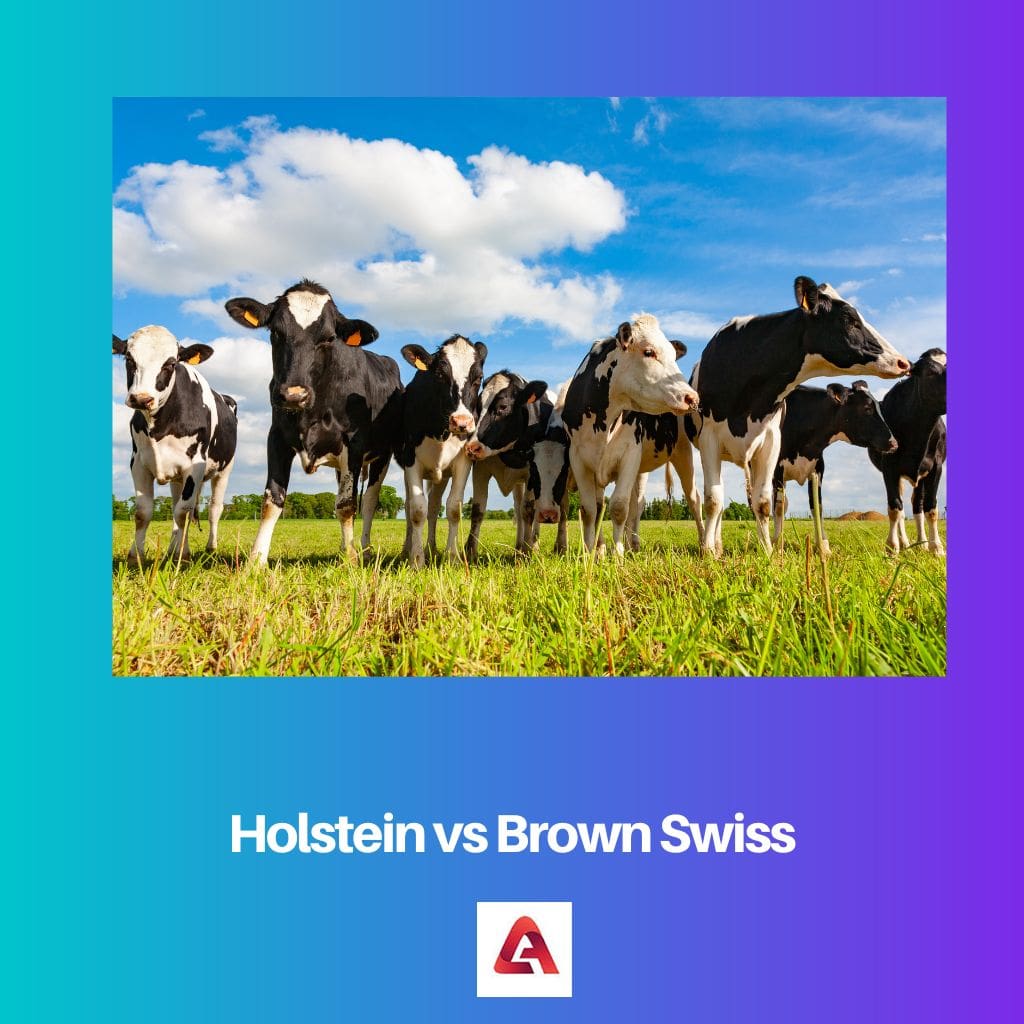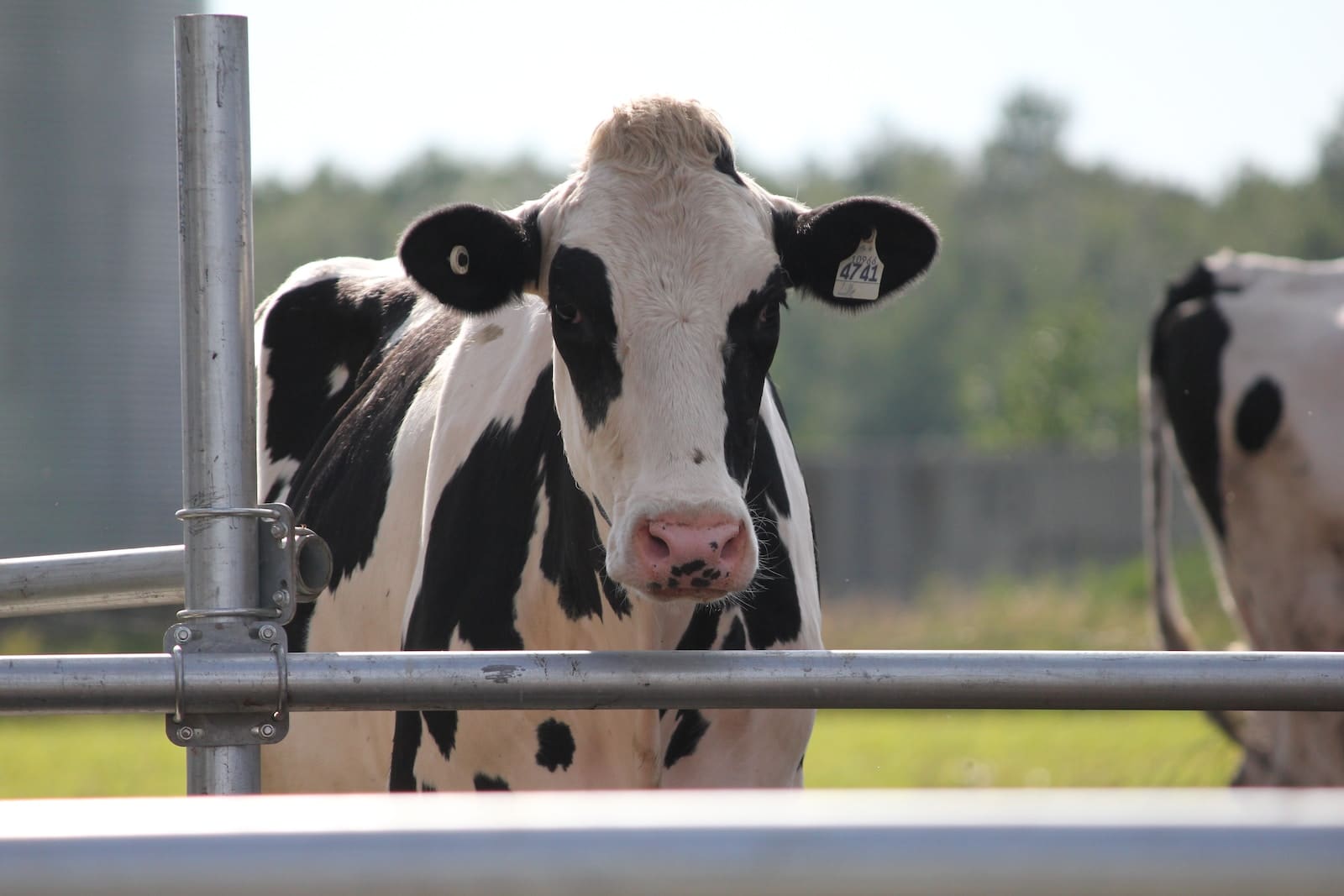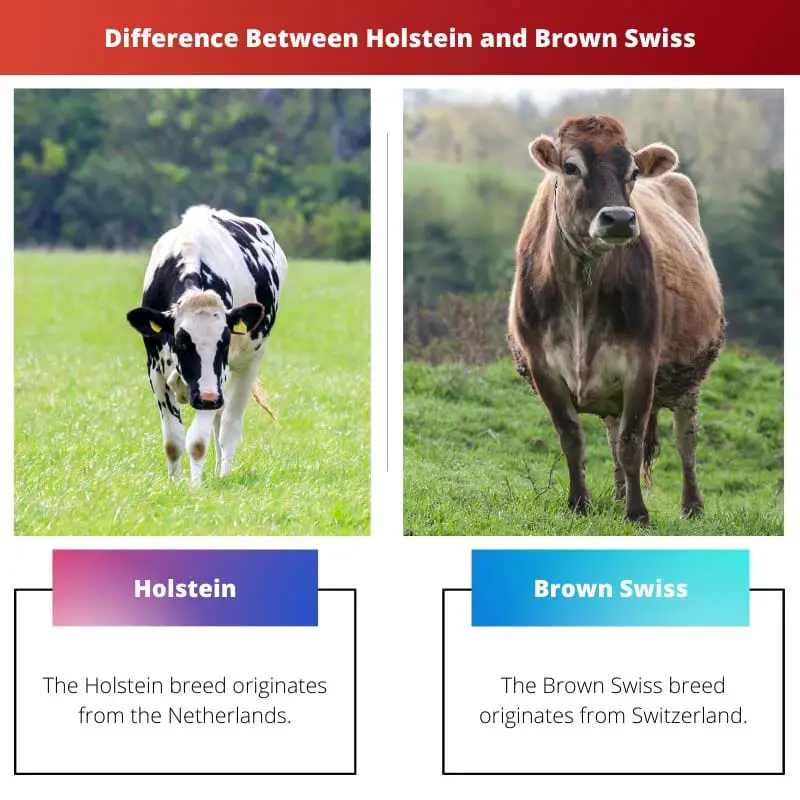There are a number of cattle breeds around the world. But when talking about the most famous ones, then the names of Holstein and Brown Swiss can be heard everywhere.
Their popularity is a result of the unequalled yield of milk in a year. This even makes them very popular among cattle breeders as well as dairy owners.
Key Takeaways
- Holstein cows produce more milk but lower butterfat content than Brown Swiss cows.
- Brown Swiss cows are known for their strength and docile temperament.
- Holsteins have distinctive black and white markings, while Brown Swiss cows have a solid brown coat.
Holstein vs Brown Swiss
Holsteins are the most common breed of dairy cattle in the US, known for their high milk production. They can produce up to 22,000 pounds of milk per year and are used in commercial dairy farming operations. Brown Swiss cows are known for their docile temperament and high milk quality, producing up to 25,000 pounds per year.

The Holstein breed of cow originates from the Netherlands. It has widespread popularity due to the quality as well as the amount of milk yielded per year.
It is also called the Holstein-Friesian cattle and is bigger, fuller and heavier than most of the cattle breeds out there.
The Brown Swiss cattle breed originates from Switzerland. To be very precise, they came from the Swiss Alps and gained great popularity due to a similar reason as the Holstein – substantial milk yield per year.
They have a beautiful brown and sometimes even silvery textured appearance. They are lighter and large but a little small compared to Holstein.
Comparison Table
| Parameters of Comparison | Holstein | Brown Swiss |
|---|---|---|
| Origin | The Holstein breed originates from the Netherlands. | The Brown Swiss breed originates from Switzerland. |
| Appearance | Holstein has black and white spots. | The Brown Swiss has a light brown or silvery appearance. |
| Ranking | Holstein tops the cattle breed chart. | The Brown Swiss breed comes second after Holstein. |
| Butterfat | Holstein milk has a 3.7% of butterfat. | The Brown Swiss milk has a 4% of Butterfat. |
| Size | Holstein can be said to be larger and heavier than Brown Swiss. | Brown Swiss is lighter and large in size. |
What is Holstein?
The Holstein cattle breed unique and white live famous cow breed that has a lot of characteristics, making it the best cattle breed in the world. It originates from the Netherlands and is best known for its high milk yield in a year.
The tremendous amount of milk that the Holstein cattle breed yields yearly helps the daily owners as well as in many ways.
Also known as the Holstein-Friesian cattle, this breed ranks first place in a worldwide chart of cattle breeds. With a bulky appearance, they are easy to identify due to the presence of black and white spots and reddish spots (although it is rare) on them.
The Holstein breed is quite large and so heavy that some of them can even weigh up to 580 kg.
The Holstein breed is immensely popular among dairy owners for many reasons. Firstly, the breed yields so much milk that it is enough to increase its sales by meeting more customers’ demands.
Secondly, the milk of the Holstein cattle breed contains 3.7% butterfat which means that it can also be used to produce various other dairy products and increase their range of items to sell.
The breeders can make a lot of profit by breeding this high-yielding cattle breed.

What is Brown Swiss?
As the name suggests, the Brown Swiss cattle breed has its own differences from the Holstein breed. They originate from the Swiss Alps in Switzerland, and the harsh climate there helped them gradually adapt to extreme climates and environments.
After Holstein, the Brown Swiss also ranks second in the milk production ranking. The Brown Swiss is a brilliant breed in terms of milk yield. They produce tremendous amounts of milk every year, just like the Holstein cattle breed.
Also, the butterfat content of Brown Swiss milk is 4% making it even more useful. The dairy owners prefer the Swiss Brown breed after Holstein. This high butterfat content also makes the Brown Swiss breed a magnificent and popular cattle breed.
It is pretty easy to identify the Brown Swiss breed due to their large bodies with a light brownish or silvery texture. They even have more ruffed ears than the Holstein breed.
Due to their friendly, docile nature, they become easy to rear. Therefore Brown Swiss are preferred by cattle breeders more than Holstein since they are easier to breed and have no additional requirements for breeding.

Main Differences Between Holstein and Brown Swiss
- Holstein basically originates from the Netherlands, while Brown Swiss originates from Switzerland (Swiss Alps).
- Holstein is way bulkier and more massive than the Brown Swiss cattle breed, which is lighter and smaller in comparison.
- The Butterfat content of Holstein is only 3.7%, while that of Brown Swiss is 4%.
- To identify the breeds: Holstein has large and small black and white spots, while Brown Swiss has a light brownish or silvery texture.
- On the one hand, Holstein comes first in ranking cattle breeds; on the other hand, Brown Swiss holds second place.




